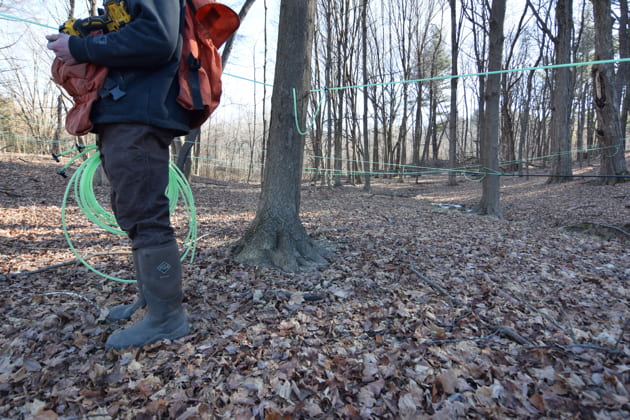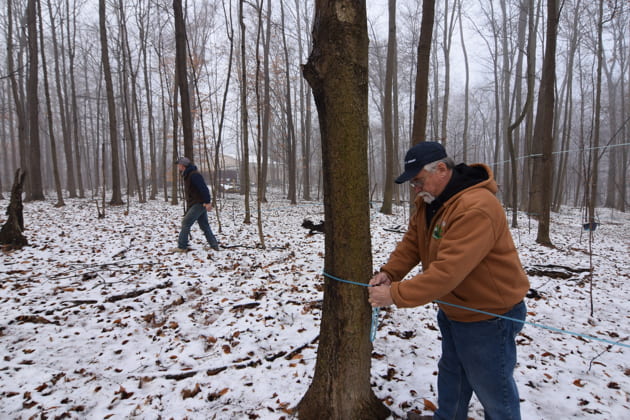Sugarbush Management
Study shows declining winter snowpack is hurting the sugar maple
Tree growth slows by more than 40 percent in test plots
By PETER GREGG | FEBRUARY 13, 2019
NEW YORK—Despite a steady campaign of snowstorms this winter, the decades-long trend of declining snowpack is slowing down tree growth, scientists say.
A loss of snowpack, and in turn a deeper frost layer, dramatically reduces the ability of the sugar maple to take up water and nutrients through frost damaged roots, according to researchers.
“The experiments we conducted suggest snowpack declines result in more severe soil freezing that damages and kills tree roots, increases losses of nutrients from the forest and significantly reduces growth of the iconic sugar maple,” said Andrew Reinmann, PhD, Assistant Professor, Environmental Sciences Initiative, CUNY Advanced Science Research Center at Hunter College in New York City.
Reinmann and his team reviewed six decades of U.S. Forest Service data showing declining winter snowpack at Hubbard Brook’s forest in the White Mountains of New Hampshire.
The 7,800-acre research forest is heavily populated by sugar maple and yellow birch trees and has been used for over 60 years to study changes in northern hardwood forests.
To figure out the affect on trees, Reinmann and his researchers removed snowpack from designated plots during the first 4-6 weeks of winter each year between 2008 and 2012 and then compared the condition of the soil and sugar maples to the soil and trees in adjacent plots with natural snowpack.
Their analysis found soil frost depth reached nearly one foot in areas where snow cover had been removed compared to roughly 2 inches at control plots.
The severe frost caused damage to tree roots that triggered a cascade of responses, Reinmann said. Those included reduced nutrient uptake by trees, shorter branch growth, loss of nitrogen from soils into nearby waterways, and decreases in soil insect diversity and abundance.
And it’s not a small amount.
Reinmann said growth declined by more than 40 percent in response to snow removal and increased soil freezing.
“We did not expect to find such a large decline in growth,” Reinmann said in an interview with The Maple News.
The trees also were unable to rebound even after snowpack removal ceased, he said.
“These patterns are happening throughout the North Country,” Reinmann said.
Reinmann said that there has been an overall decline of approximately 20 days of snowpack per winter observed throughout the Northeast.
“Most winters we get a lot of snow but there is a lot of variability between the years,” he said. Trees need to have at least eight to ten inches of snowpack to preserve root health, he said.
Reinmann and his team of researchers are planning to work directly with sugarmakers in the coming years.
“We are looking to research further how it affects the quantity and quality of sap production,” Reinmann said.

































